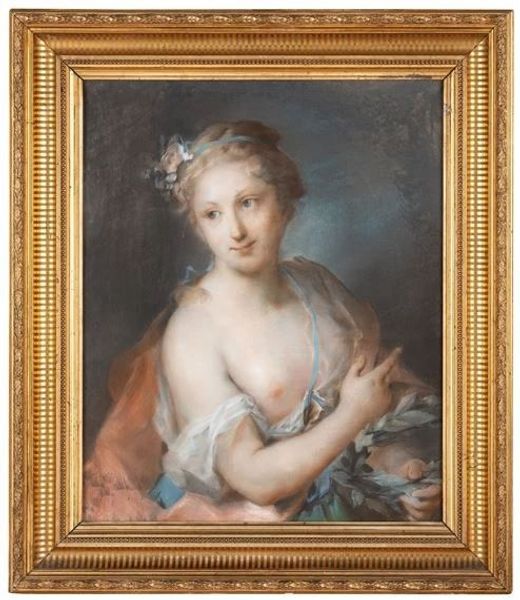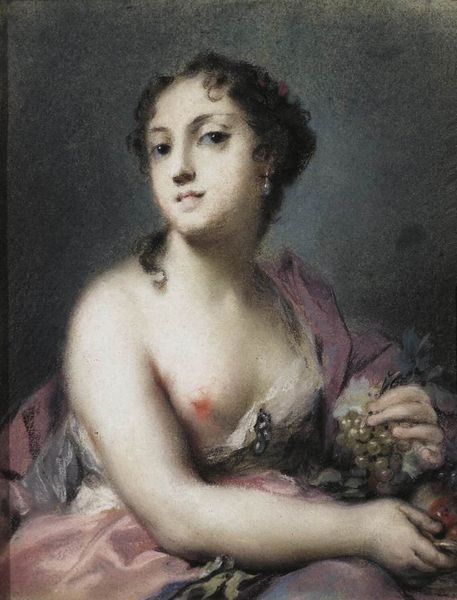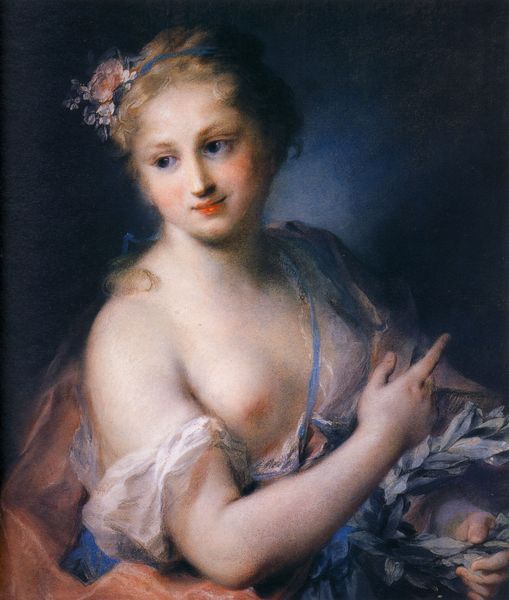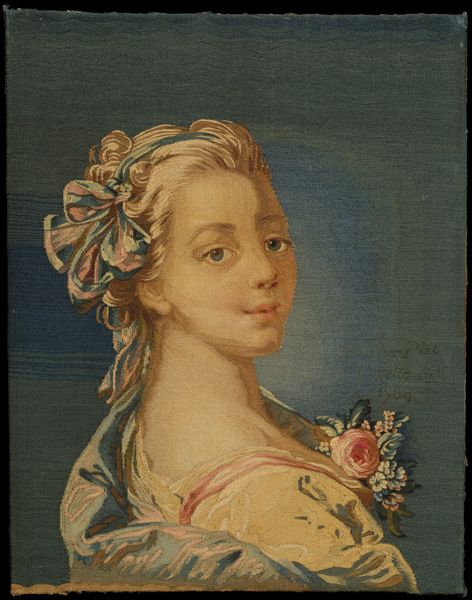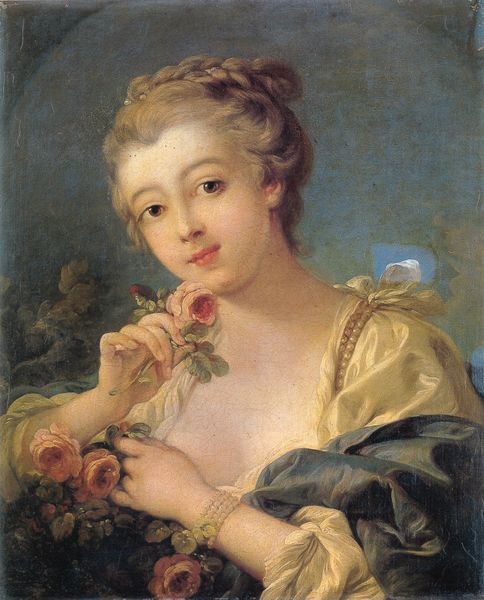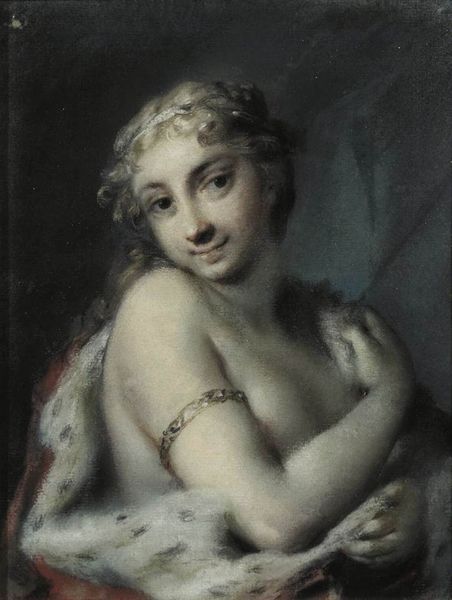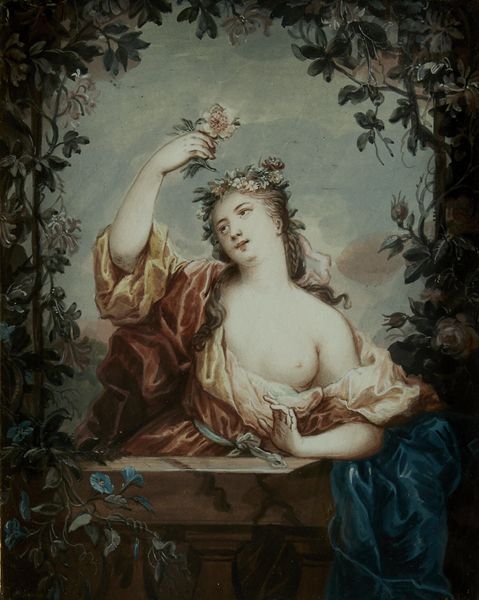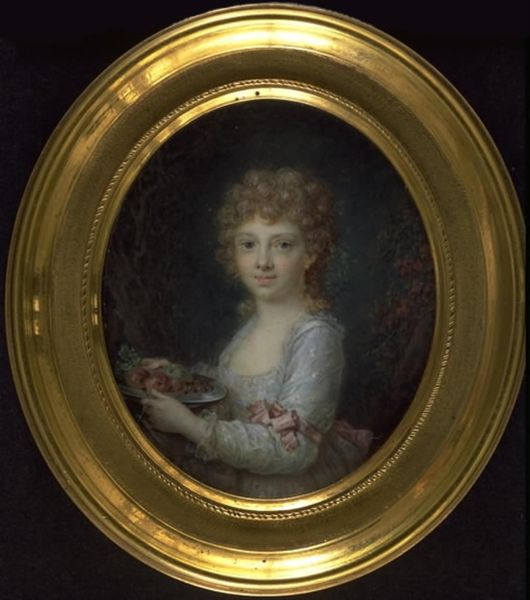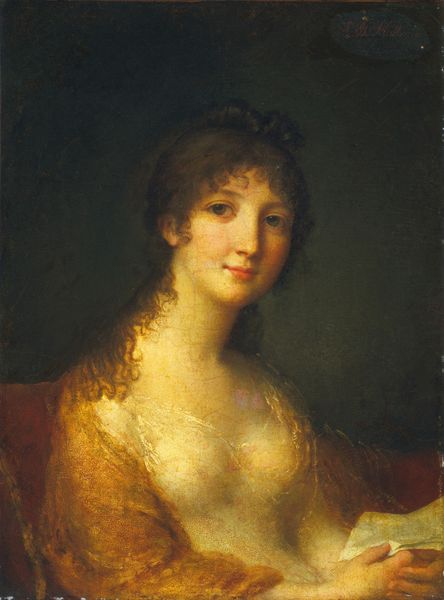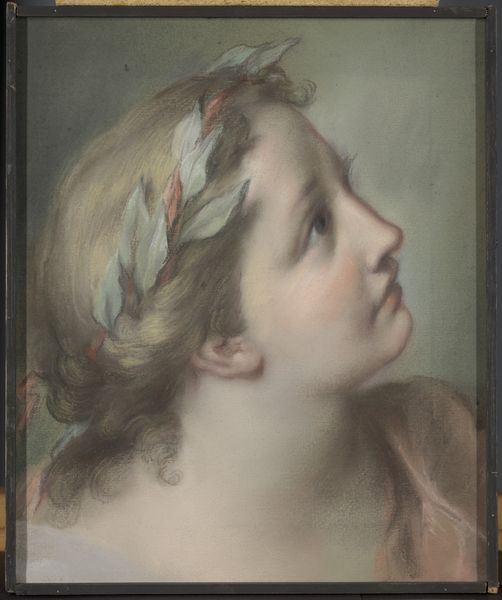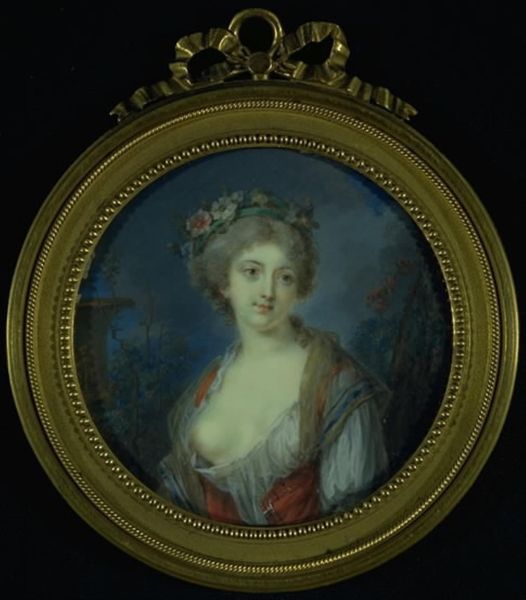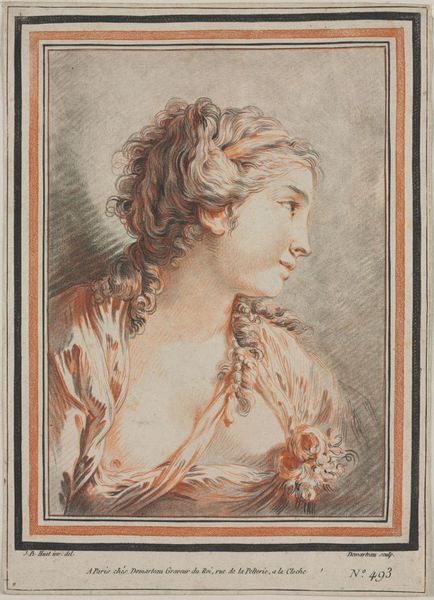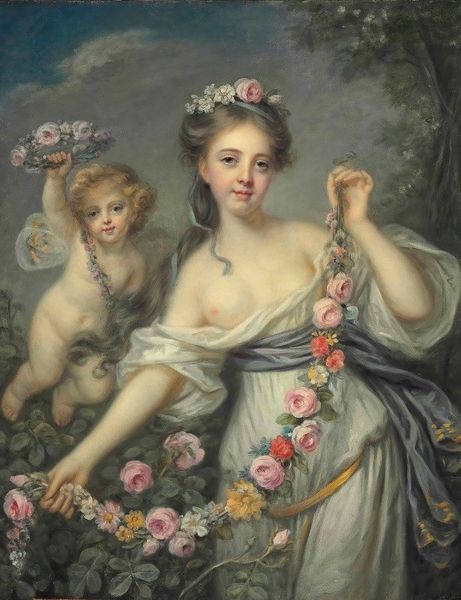
painting, gouache, watercolor
#
portrait
#
gouache
#
painting
#
gouache
#
figuration
#
oil painting
#
watercolor
#
watercolour illustration
#
genre-painting
#
miniature
#
watercolor
#
rococo
Dimensions: 5.4 cm (height) x 7.4 cm (width) (Netto)
Curator: Here we have Cornelius Høyer's "Kvindelig figur forestillende \"Efter høsten\"", or "Female Figure Representing 'After the Harvest,'" created between 1766 and 1767. It's a gouache painting. Editor: Oh, isn't she lovely? The colours are so gentle, almost like a whispered promise. It evokes a soft melancholy, a dream fading at the edges. Curator: Yes, the softness likely arises from the gouache medium and its application, lending itself to delicate washes of color. Beyond just aesthetic appeal, what social functions could it have served? Were similar artworks commodities, symbols of status, or part of a broader representational system? Editor: Perhaps it was a commission, something treasured for its beauty, even bartered amongst merchants. Look how lightly she touches those grapes – there is a sense of playfulness in the depiction of the female form here and her connection with earthly produce, not simply one of representation of an idealized class. The choice to capture the spirit, the moment of contact with fruits, feels... generous, and kind of personal. Curator: Her adornment also speaks volumes: the drapery and the implied labor in textile production, alongside the plucking and presenting of those cultivated grapes. It suggests both a direct relationship with and some remove from agricultural production. The availability of this representation itself shows existing wealth and societal frameworks where art production could thrive. Editor: It's that little knowing smirk, though, that has captured me. Almost as if the harvest isn’t merely what fills the basket, but the knowing she's earned under the sun! All of which brings to mind those forgotten agricultural goddesses; what's more, it might be playful but it does celebrate, materially and spiritually, the essence of labour. Curator: Certainly. To properly grasp its impact, you can explore how materials from gouache to fabric and commodities were consumed and produced at the time. It lets one observe societal hierarchies, power structures, as well as shifting patterns regarding land use in Høyer's Denmark. Editor: Maybe sometimes the most profound harvests happen between the beholder and the painting. I shall take away that feeling, lingering and delightful. Curator: Agreed. We depart here equipped not only to recognize how art mirrors social conditions, but also to appreciate their intricate links, expressed throughout its production, presentation, and potential functions.
Comments
No comments
Be the first to comment and join the conversation on the ultimate creative platform.
